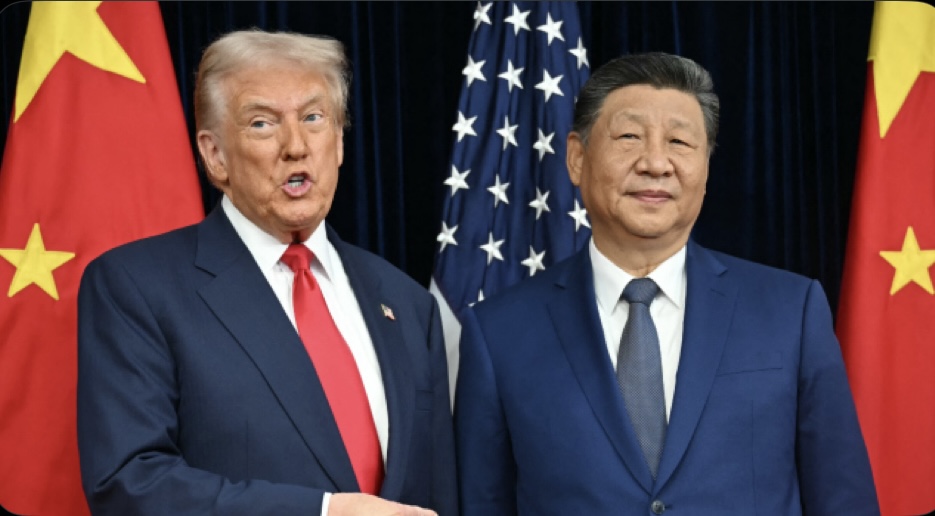China and the United States have eased tensions in their protracted trade war, bringing a tentative end to months of escalating measures between the two economic and technological powerhouses. The détente emerged from last week’s meeting between President Donald Trump and President Xi Jinping in South Korea, signaling a new phase in a standoff that has persisted since 2018 The summit, held on the sidelines of the APEC meeting, resulted in a series of short-term measures aimed at reducing friction, restoring trade flows, and fostering cooperation on key economic and security issues Under the agreement, the United States will cut average tariffs on Chinese goods from roughly 57 percent to 47 percent, while halving a targeted 20 percent “fentanyl-related” tariff to 10 percent. China, in turn, has agreed to suspend newly imposed export restrictions on rare-earth materials and magnets for one year and to resume significant purchases of U.S. agricultural products, including soybeans and corn Both countries also announced plans to establish a joint working group to tackle the trafficking of fentanyl and related chemicals, a major source of bilateral tension Despite these steps, analysts warn that the truce is temporary and does not resolve broader disputes. Export controls on advanced technologies, including semiconductors, remain in place, and contentious issues such as intellectual property, market access, and geopolitical flashpoints like Taiwan continue to pose risks to the bilateral relationship President Trump described the outcome as a “12 out of 10” success, while officials emphasized that the agreement is a one-year pause rather than a permanent settlement. Economists and trade specialists welcomed the easing of tariffs but cautioned that businesses are unlikely to make immediate supply chain changes The agreement will now move to technical teams in both countries, which are expected to set implementation timelines, monitor compliance, and manage disputes. President Trump has indicated a possible visit to China in April 2026 to further advance the progress made in Busan. For now, the temporary truce offers relief to global markets and multinational companies affected by years of trade uncertainty, though experts warn that unresolved strategic disagreements could reignite tensions in the future.









